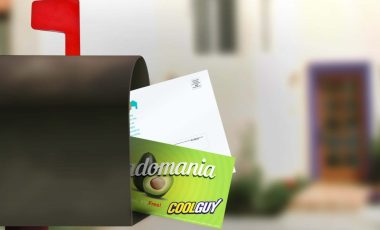Postcards: 7 Data-Driven Reasons They’re the Best in Direct Marketing Services

In the world of marketing, postcards win hands down.
They have an increased response rate and build trust that turns into revenues as we’ll show you. On top of this, their ROI blows other methods out of the water.
Are you investing in direct marketing services like postcards? If not, check out the data that demonstrates that you should be.
Let’s explore the 7 data-driven benefits of postcard campaigns and 5 expert tips to getting the greatest return on your investment.
7 Benefits of Postcards
1) Length
Post cards are perfect for concise messages that get attention and encourage people to take a simple action like using a discount on the card.
In the U.S. the average adult only spends about 19 minutes reading and has a 7-second attention span. The quicker you can convey your message the better.
Because you’re not sharing a page with lots of other businesses, customers see you first and pay attention.
2) Response Rate
Postcards and other direct marketing services have a high response rate of nearly 4%.
Doesn’t sound like much? It will when we tell you that mobile ads have about a 0.2% response rate and social gets a whopping 0.1% rate of response.
People see postcards. They notice them. And, statistically speaking, they respond. Your results could be much higher with the right campaign.
In addition, response rate only measures response to that postcard within a given timeframe. Brand awareness is yet another benefit that you can turn into real revenues over the longer term.
3) Brand Awareness
42% of recipients read postcards when they receive them. And they recall what they’re reading. Post cards can have a significant impact on getting your brand out there in the Houston area and keeping it in mind.
4) Brand Recall
Studies have shown that consumers who receive direct mail services like post cards had a 75% brand/offer recall rate. This blows other forms of advertising out of the water.
For comparison, the same brand/offer received through a digital format has a recall rate of only 44%.
5) Functionality
What do customers do when they get a digital offer? They either print it or pull it up on their smart phone when they visit.
For the 30%-40% of people who don’t have a smart phone or no Internet access in your store, printing is their only option. If they don’t have a printer, they’re out of luck.
Postcards are already in printed form. They’re sturdy yet light. It’s easy to fold one up into a wallet or pocket. It gives customers a physical reminder that they want to take advantage of your offer.
6) Builds Trust & Relationships
56% of customers find direct mail services like postcards more trustworthy than other forms of advertisement. 70% find it more personable than receiving the same ad through other means.
Postcards fill your trust and loyalty meter with customers.
7) Return on Investment
Each of these stats would be all for nothing if the ROI weren’t there. If it costs a lot more to use direct marketing services like postcards without a proportional return, then why would you do it?
Fortunately, the return is there.
On average the ROI is around 20%. Much of this return is immediate when someone redeems a coupon. The rest builds up over time in the ways we’ve described above. Both are measurable as we’ll discuss in the next section.
5 Rules For Effectively Managing Postcard Campaigns
1) Value Analytics
Measure. Measure. Measure. If you don’t measure you:
- Don’t know what works
- Don’t know how well it’s working
- Can’t adapt to make it work even better
To measure results, at the very least, consistently track:
- How many offers were redeemed
- Net increase in customer visits during and immediately following the campaign
- Revenue increase during same period
- Revenue growth over 6 mo, 12 mo, etc.
- Increased CLV (customer lifetime value) due to greater loyalty
2) Design with Results in Mind
What do you want to achieve? Think it out and design around it.
Everything on the postcard should have a purpose and a clear expectation of results. Consider who your target is, what they want and make them an offer they can’t refuse.
3) Be Consistent
Branding matters. All colors, fonts, images, layout, etc. should be consistent and identifiable with your brand. Your logo should stand out, invoking recognition and even emotion.
It takes 7+ touch points with your brand before someone buys. Don’t miss an opportunity by not being recognizable.
In addition, your mailing schedule should be consistent. Plan your postcard campaign and launch it in regular intervals. Mailing at least 1X/mo is most effective.
4) Narrow Your Target
To get the most bang for your buck narrow your sights.
Perhaps you want to target a specific neighborhood with lots of new construction with an offer that those in a burgeoning neighborhood would really appreciate.
Maybe you target an area where you know you already have customers. Your goal could be to increase word of mouth and to get more sales from existing customers.
Or you could target apartment dwellers with a space-saving product or service that those in apartments will find uniquely useful.
Don’t go too narrow because printing costs may go up. But go narrow enough to provide the right offer to the right target.
5) Give Them a Reason to Care
Postcards should always have a clear outcome and that outcome should be beneficial to the customer. Sending out postcards that offer to save a customer $10 or 15% will be a waste of resources.
The offer should get people excited and make it worth their while to take you up on that offer. Even if your margins are tight, you won’t lose money if you’re building your customer base through postcards.
Direct Marketing Services Win
Direct marketing services win. They build trust and loyalty and generate sales. When optimized and measured, they’ll give you the right return on investment.
Ready to start connecting with your Houston area customers through print media? Get your free quote today.




